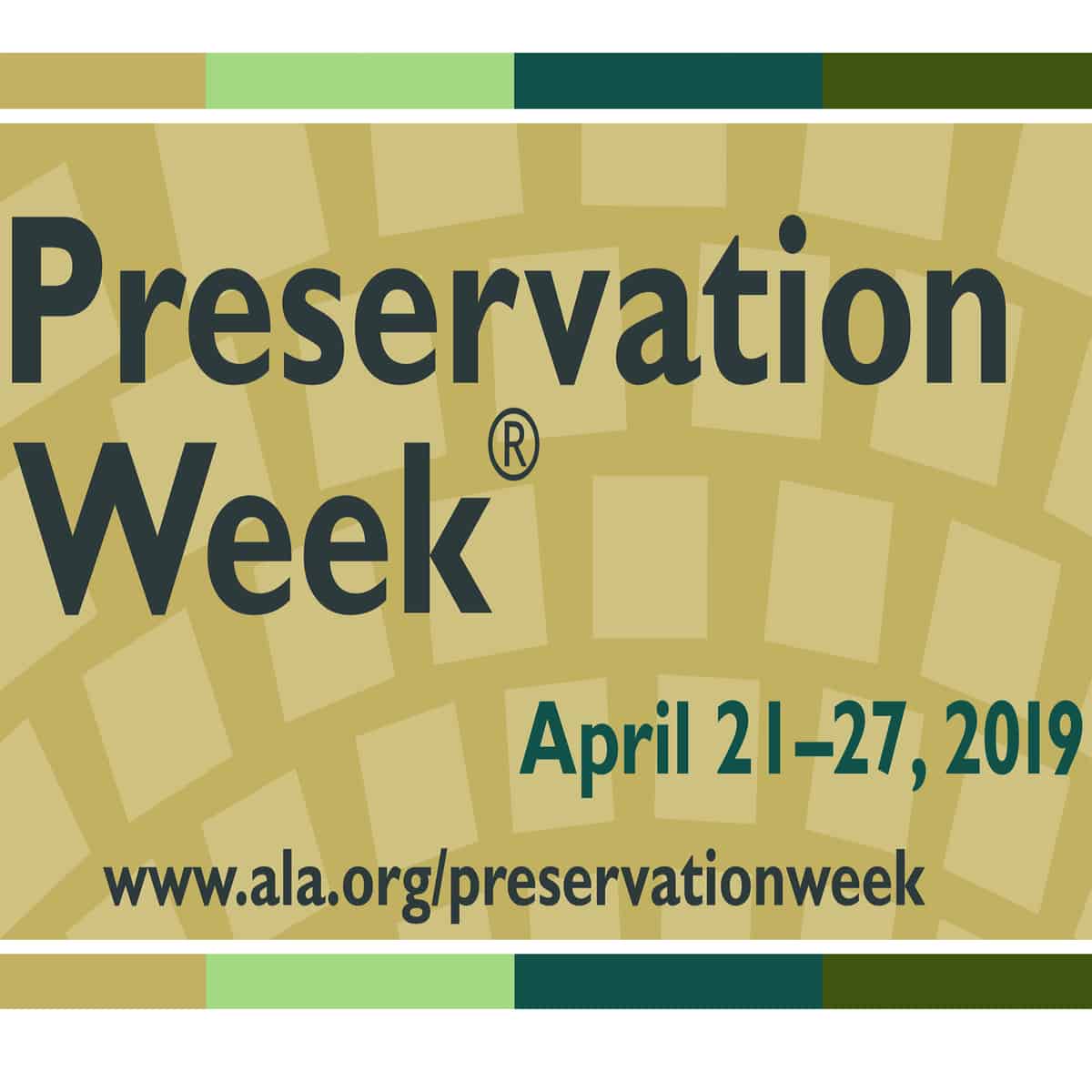This week is Preservation Week, which is sponsored by the Association for Library Collections & Technical Services (ALCTS), a branch of the American Library Association (ALA). Preservation Week is an opportunity to learn about and take action to preserve collections. The theme for this year’s celebration is “Preserving Your Family History” which emphasizes the importance of preserving the collections of families, individuals, and communities in addition to those in libraries, museums, and archives.
Category Archives: Tips
Hinge Tightening
Hinge Tightening or Tightening in Case This treatment should be performed when the hinge(s) of a book are loose but not separated. Do not use this treatment if the cover cloth is torn at the joint. The materials needed for this treatment are: Knitting needle PVA inContinue reading “Hinge Tightening”
Banner Solution
Wednesday, February 17, 2010 For months we’ve looked at the Jesse Jackson banner trying to figure out what to do with it. It was obvious from inspecting the banner that part of the damage was from folding the banner and not from the flood. Once repaired or at least stablized we didn’t want to foldContinue reading “Banner Solution”
Maximizing Poster Space
Tuesday, January 19, 2010 I have a cool tip that I thought I’d pass along. Last week we decided to take a poster to the American Library Association preservation section meeting describing how the flood and other recent events have impacted our department. Hauling a poster through the airport and onto an airplane is noContinue reading “Maximizing Poster Space”
Storage is as important as treatment
Wednesday, October 7, 2009 The objects we have received since the flood span a wide range of materials. Since we couldn’t work on everything immediately, one of the first things we had to address was proper storage. The wooden objects were set out to dry as were the baskets and miscellaneous plastic, ceramic, glass items. The metalsContinue reading “Storage is as important as treatment”
Cleaning Moldy Books and Magazines
Thursday, March 5, 2009 Over the past few days, I have received several inquiries on how to deal with mold on books or magazines. Here are some tips. The items need to be dry before working on them. Set them out somewhere away from people (I use my garage), to let the items dry. IfContinue reading “Cleaning Moldy Books and Magazines”
Soaking LP Covers Works Sometimes
Wednesday, February 4, 2009 The covers of the LP records in the Czech Slovak Collection come in different formats and conditions of which some are worse than others. Then there are those few that are exceptionally awful. This is an example of a double disc set in which the inner images fused together in theContinue reading “Soaking LP Covers Works Sometimes”
